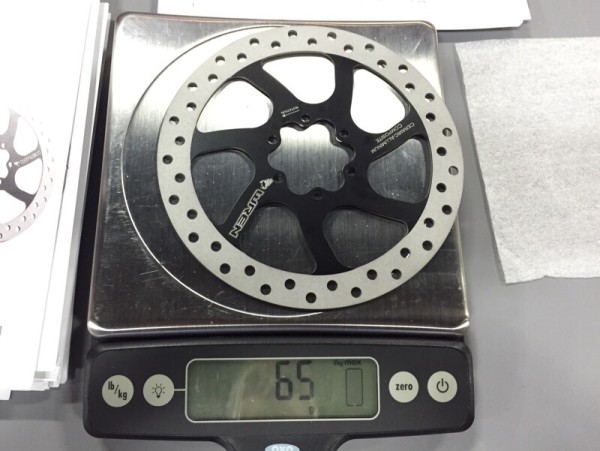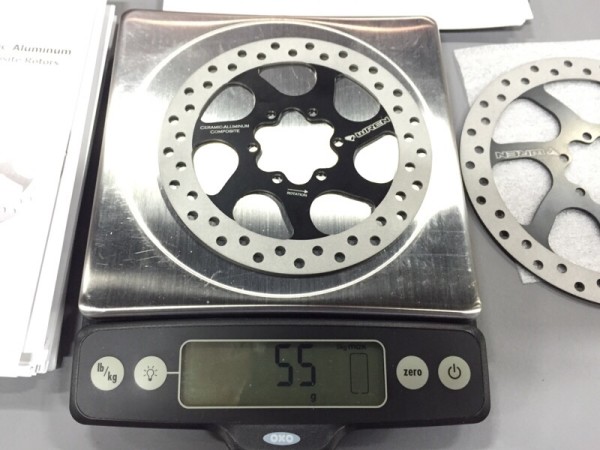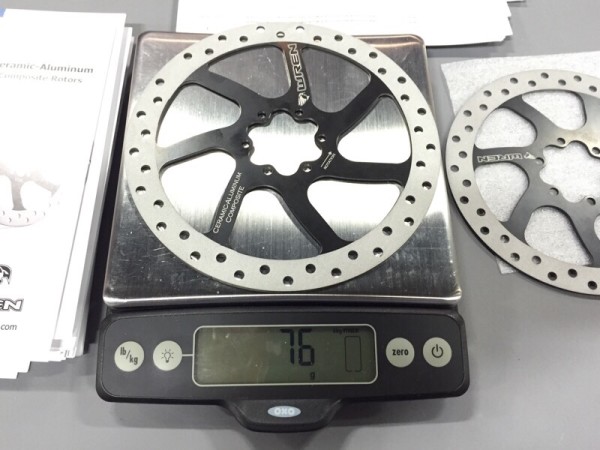We first spotted Wren Sports’ ceramic-alloy disc brake rotors at Taipei Cycle Show earlier this year, at which time they were still finalizing the shape. Now, they’ve settled on a “drilled” look with anodized center section and let us throw them on the scale.
They’re also in early production and expect to ship 10,000 pieces per month thanks to OEM deals he’s put into place. Founder Kevin Wren says they’ve passed ISO and CPSC testing and will be available on their website soon. Retail is $99 each whether you choose the 140, 160, 180 or 203 millimeter rotors.
The 160mm rotor above comes in at just 65g. Check out weights for the 140 and 180 below, along with technical info on the composite material’s benefits and testing protocols…
Wren says the EN test requires rotors to go up to 500°F, but those won’t pass that one because the material won’t handle that high of a temperature. But, he says those tests use standards set for stainless steel rotors, not the ceramic aluminum composite these are made of. And Wren says in the real world, these rotors will never get so hot they fail because the material dissipates the heat too quickly. And should you drag it continuously down a long mountain, it’ll eventually warp slightly rather than blow up, giving you an audible heads up that you should pull off and let it cool down. He added that you’d have to go out and intentionally try to trash them to get them to warp…it’s not likely to happen in normal riding.
The newer CPSC protocol tests stopping distance against the amount of pad force applied to it, and he says they pass that one just fine. The ISO test cycles the braking on and off, so it passes that one, too. Those two seals of approval were enough for them to get OE placement deals.
In addition to rapid heat offloading, they claim 50% better wet weather performance than one of the leading rotors, with equal dry weather power.
The 140mm (above) comes in at 55g, and the 180mm (below) hits the scales at 76g.


